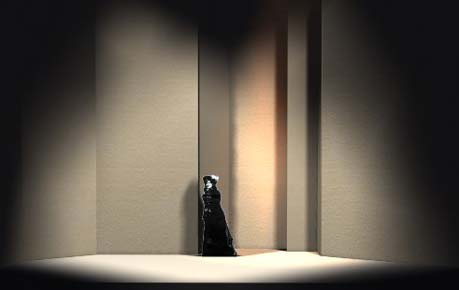
![]()

![]()
Appia, Adolphe (1862-1928), Swiss artist,stage designer, and theorist, who pioneered modern staging and lighting techniques. His first publication, "La Mise en scĶne du drame Wagnķrien" (The Staging of the Wagnerian Drama, 1895), set forth his innovative theories in precise staging and lighting plans for the major operas of the German composer Richard Wagner. In "Music and the Art of the Theatre" (1899), Appia grouped his principles in two major categories-scenery and lighting. He believed that scenery must be three-dimensional and multileveled, rejecting the convention that scenery should be painted flatly on a set. Appia used lighting to unify the stage picture, enhance the music, and underline the action. To accomplish these goals, lighting must be mobile, able to change and shift with the mood and action. Appia's final work, "L'oeuvre d'art vivant" (The Living Work of Art, 1921), summarizes all his theories and experience; he reiterated that the designer-director's prime concerns are the actors, their movements, and their words.
| Home | Design | Art | Ballet |
| Costume Design | Scene Design | ||
| Jo Mielziner | Gordon Craig | ||